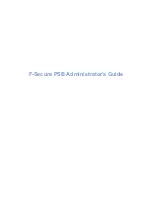
ADOBE DIRECTOR 11.0
User Guide
409
What the MUI Xtra contains
The MUI Xtra contains several components that you can use to create dialog boxes:
•
Lingo elements:
•
Alert
•
FileOpen
•
FileSave
•
GetItemPropList
•
GetUrl
•
GetWidgetList
•
GetWindowPropList
•
Initialize
•
ItemUpdate
•
New
•
Run
•
Stop
•
WindowOperation
•
A predefined list of window properties that you can use as default values for a general purpose dialog box
•
A predefined list of properties for components of a general purpose dialog box
Creating dialog boxes
To create dialog boxes from the MUI Xtra:
1
Plan and design the dialog box: Determine what users need the dialog box to achieve, the type of interface
components that best accomplish this, and where the data in the dialog box comes from. Sketch a preliminary dialog
box to get a better idea of where options need to appear and how well they fit into the dialog box.
2
Decide which type of dialog box to use.:The MUI Xtra provides predefined dialog boxes for entering alerts,
opening and saving files, and for entering URLs. These are relatively easy to create. If none of these types are appro-
priate, you can define your own general purpose dialog box.
3
Use the statement new (xtra "MUI") to create an instance of the MUI Xtra.
4
Set up the dialog box.
You can create two types of dialog boxes:
•
Standard dialog boxes that you use for alerts, opening and saving files, and opening URLs. When the user clicks
a button, the dialog box responds accordingly and sends the appropriate message back to Director.
Create these by calling the function that creates the specific dialog box.
•
General purpose dialog boxes for which you define each attribute and component in the dialog box, and then
explicitly initialize and run the dialog box.
Creating a standard dialog box
Create and customize a standard dialog box by using the function for the specific type of box.
















































